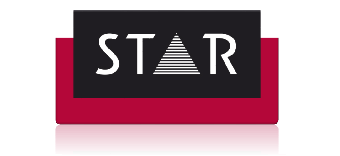What is the difference between ISO 9001:2008 and ISO 9001:2015?
The 2 standards focus on different areas. The latest standard is ISO 9001:2025
- ISO 9001:2008 focused primarily on ensuring consistent quality through documented procedures and preventive actions.
- ISO 9001:2015 introduces risk-based thinking, leadership engagement, and adaptability, making it better suited to modern business environments.
Consider this challenge:
You are looking for a new translation supplier and are speaking to two vendors.
The potential vendors inform you they are both ISO 9001 certified. However as you continue discussions you find out one is certified to ISO 9001:2008 and the other ISO 9001:2015.
Should this impact your decisions? What is the difference?
Here are the key differences between ISO 9001:2008 and ISO 9001:2015:
- Structure: ISO 9001:2015 adopts a new structure called the High-Level Structure (Annex SL), making it easier to integrate with other management system standards.
- Focus on Context: ISO 9001:2015 emphasizes understanding the organization’s context and the needs of interested parties, which was not explicitly required in ISO 9001:2008.
- Risk-Based Thinking: ISO 9001:2015 introduces a proactive approach to identifying and addressing risks and opportunities, whereas ISO 9001:2008 focused more on preventive actions.
- Leadership Involvement: ISO 9001:2015 requires top management to take a more active role in the quality management system, moving beyond delegation.
- Documented Information: ISO 9001:2015 replaces the term “documents and records” with “documented information,” allowing more flexibility in how information is maintained.
- Process Approach: ISO 9001:2015 strengthens the process approach by requiring organizations to define processes and their interactions more clearly.
- Terminology Changes: ISO 9001:2015 updates terminology to align with modern practices, such as replacing “product” with “goods and services”.
Which is better?
ISO 9001:2015 is generally considered better because it provides a more comprehensive framework for quality management, emphasizing adaptability, risk management, and leadership involvement. It aligns better with current business practices and integrates seamlessly with other standards. However, the choice depends on your organization’s specific needs and goals.
Business Decision and Influence
ISO 9001 standards significantly influence business performance by fostering a culture of quality, efficiency, and continuous improvement. Here’s how:
- Enhanced Customer Satisfaction: By focusing on meeting customer requirements, these standards help organizations improve product and service quality, leading to higher customer satisfaction and retention.
- Operational Efficiency: The process-based approach and emphasis on consistency reduce errors, waste, and inefficiencies, leading to smoother operations and cost savings.
- Risk Management: ISO 9001:2015’s focus on risk-based thinking equips businesses to identify and address potential issues proactively, minimizing disruptions and increasing resilience.
- Leadership Engagement: Increased involvement of top management ensures that quality objectives align with business strategies, strengthening overall performance.
- Improved Decision-Making: Data-driven decision-making, a core principle of the standards, helps businesses make informed and effective choices.
- Market Competitiveness: Certification demonstrates commitment to quality, which enhances credibility, opens up new market opportunities, and can even be a prerequisite for certain contracts.
- Employee Engagement: Clearly defined roles, responsibilities, and processes boost employee morale and productivity by fostering a sense of purpose and direction.
Overall, ISO 9001 standards create a foundation for sustainable growth by aligning quality management practices with business objectives. This not only improves current performance but also positions organizations for long-term success.


